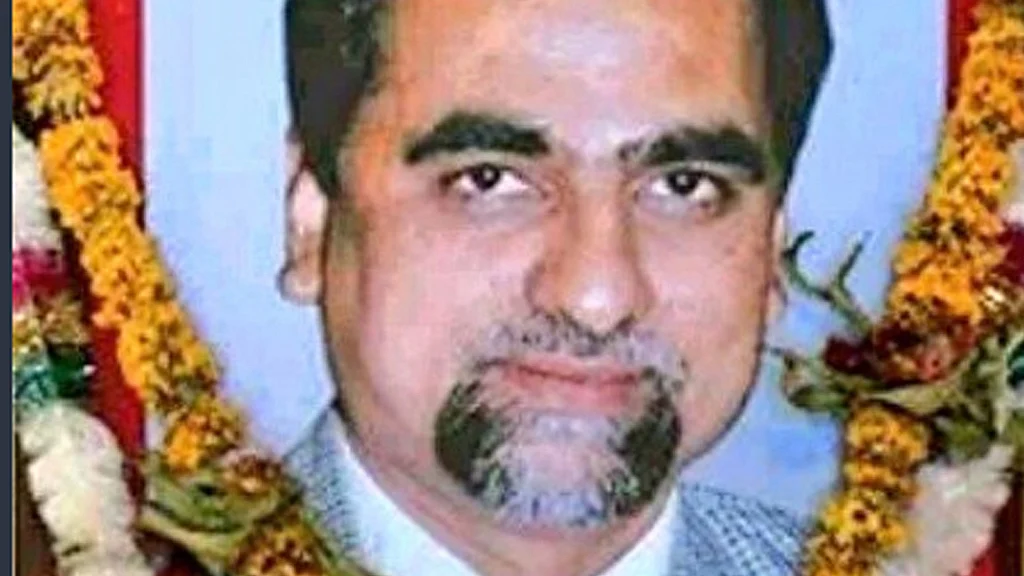My Brother was offered 100 cr- says deceased CBI judge’s sister
The then Chief Justice of Bombay HC offered her brother₹100 Cr and a house in Mumbai for a judgment favouring Amit Shah in the Sohrabuddin case, alleges the sister to Niranjan Takle

In yet another sensational expose in the Sohrabuddin encounter killing case published in The Caravan, journalist Niranjan Takle revealed on Monday that Brijgopal Harkishan Loya, CBI Special Court Judge in Mumbai was offered a bribe of ₹100 crore in return for a favourable judgment by Mohit Shah, the then chief justice of Bombay High Court. One of Loya’s sisters, Anuradha Biyani told Niranjan, “My brother was offered a bribe of 100 crore...Mohit Shah, the chief justice, made the offer himself.” Loya’s father Harkishan also told Takle that his son had told him he had offers to deliver a favourable judgment in exchange for money and a house in Mumbai.
The judge, who died mysteriously in Nagpur on December 1, 2014, had confided to his father that he would rather seek a transfer or retirement.
Journalist Niranjan Takle has pieced together damning series of circumstantial evidence that casts a cloud over Nagpur Police, the Rashtriya Swayamsevak Sangh and Amit Shah, the BJP national president, who was facing trial in the CBI court for the fake encounter killing of Sohrabuddin Sheikh.
Brijgopal Harkishan Loya (48) , judge of a CBI Special Court in Mumbai, was healthy, played table tennis for two hours every day and had no history in the family of any cardiac problem. His parents, both in their eighties, are still alive and active. And yet the judge, who had travelled to Nagpur on November 29, 2014 to attend the wedding and reception of a colleague’s daughter, spoke to his wife for 40 minutes after 11 pm on November 30 cheerfully enough, was said to have suffered a massive cardiac arrest at 12.30 am and died.
While the Supreme Court had in its order said that the same judge should hear the case from start to finish, the first judge was transferred on June 25, less than a month after Narendra Modi was sworn in as Prime Minister. The judge had reprimanded Amit Shah for not appearing in the court even once. His lawyers had told the court that he suffered from diabetes and could not move. After the NDA won the election in May, 2014, they simply informed the court that Amit Shah was too busy in Delhi.
BH Loya, who took over the case in October, 2014 allowed Shah exemption from personal appearance but only till the ‘charges are framed’. He voiced his displeasure at Shah not appearing on a date when he was in fact present in Mumbai. Loya fixed the next date of hearing on December 15. But on December 1, he was dead. Or, was he murdered?
Forget about the possible answers, the following questions raised by Takle’s report raise enough suspicion to warrant an independent probe:
- The two fellow judges who had accompanied Loya to Nagpur and at whose insistence he agreed to attend the wedding and reception there, did not meet the bereaved family for one and a half months after his death. Nor did they accompany their colleague’s dead body to Latur, the family’s ancestral home.
- The judges had put up in Ravi Bhavan, a VIP guesthouse in Nagpur, but claimed that Loya was taken to a private hospital in an auto rickshaw.
- The auto-rickshaw stand is two kilometres from Ravi Bhavan and normally auto rickshaws are not available near the guesthouse even in day time. How did they get one after midnight?
- Why was Loya taken to an obscure hospital called ‘Dande Hospital’?
- The judges claimed that at Dande Hospital Loya had climbed the stairs on his own, was administered some medicine. And when he was taken to another private Meditrina Hospital, he was declared ‘brought dead’.
- If he had died of natural causes and no foul play was suspected, why was a post-mortem conducted?Who decided a post-mortem was necessary ?
- Who signed every page of the post-mortem as a ‘paternal cousin’ of the deceased? And who was this mysterious man who was handed over the dead body?
- Why did a RSS worker Ishwar Baheti, and neither the Nagpur Police nor the judges, inform the deceased’s relatives of his death?
- How did Baheti inform the family of the judge’s demise at 5 am ? And why wasn’t the family informed immediately after the judge allegedly suffered a cardiac arrest?
- Why does the post-mortem report mention the time of death as 6.30 am?
- Why did the police fail to draw up a ‘panchnama’, seize personal belongings and hand them over to the police?
- How did the RSS worker Baheti come in possession of the deceased judge’s mobile phone, which he returned to the family after three days?
- Who deleted the call records and text messages from the deceased’s mobile phone, including a message he had received a few days before his death? The message, recall family members, read: “Sir, stay safe from these people”.
- The family noticed blood stains on the shirt collar of the deceased, his belt ‘twisted in the opposite direction’ , his ‘pant clip broken’ and injury on the back of his head—none of which is mentioned in the post-mortem report.
- Why was the family persuaded against seeking a second post-mortem report?
- What are the deceased judge’s widow and son afraid of? Why did they refuse to speak to Takle saying that they feared for their lives?
Follow us on: Facebook, Twitter, Google News, Instagram
Join our official telegram channel (@nationalherald) and stay updated with the latest headlines
Published: 21 Nov 2017, 12:12 AM
